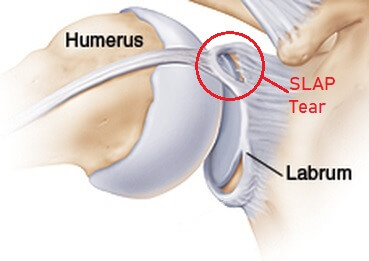
Shoulder - Arthroscopy and Sport Injury Specialist in Mumbai
SLAP (Superior Labrum Anterior to Posterior) Repairs
Dr. Aditya Pawaskar is one of top notch shoulder arthroscopy Surgeon and Sports Injuries Specialist in Mumbai. With his extensive experience in orthopedics, he provides excellent care and effective treatments for patients with shoulder and knee problems.
A Superior Labrum Anterior to Posterior (SLAP) tear is a specific type of shoulder injury involving damage to the superior part of the labrum, which is a ring of cartilage that surrounds the shoulder socket (glenoid). SLAP tears are often associated with overhead activities and can cause pain, instability, and limited shoulder function. Surgical repair may be necessary to address significant or symptomatic SLAP tears.
Indications for SLAP Repair:
SLAP repair is considered when:
- Symptoms Persist: Conservative treatments such as physical therapy and rest fail to alleviate symptoms.
- Persistent Pain: Pain, weakness, and instability affect daily activities or athletic performance.
- Diagnosis: Imaging studies, such as MRI, confirm the presence and extent of the SLAP tear.
Advantages of SLAP Repair:
SLAP repair addresses the specific issue of labral tears in the superior portion of the shoulder joint.
Arthroscopic techniques result in smaller incisions, less pain, and quicker recovery compared to open surgery
Sports Prone to SLAP (Superior Labrum Anterior to Posterior) Repairs and Injury Risks:
SLAP (Superior Labrum Anterior to Posterior) tears often result from repetitive overhead motions, forceful arm movements, and activities involving sudden deceleration. In India, the following sports may be associated with a higher risk of SLAP tears, necessitating repair:
- Cricket: Fast bowlers and players involved in frequent throwing actions, such as cricket bowlers, may be prone to SLAP tears.
- Badminton: The repetitive overhead motions, especially during serves and smashes, in badminton can contribute to SLAP injuries.
- Tennis: Tennis players, particularly those engaged in overhead serving and powerful strokes, may be at risk of SLAP tears.
- Volleyball: Frequent overhead hitting and blocking actions in volleyball can place strain on the labrum, leading to SLAP tears.
- Swimming: Competitive swimmers, especially those using strokes like freestyle and butterfly, may be prone to SLAP injuries.
- Weightlifting: Heavy lifting and repetitive shoulder exercises in weightlifting can contribute to SLAP tears.
- Basketball: Jumping, shooting, and potential for collisions in basketball may increase the risk of SLAP injuries.
- Gymnastics: The intense upper body movements and weight-bearing on the shoulders in gymnastics may pose a risk of SLAP tears.
- Wrestling: Wrestling, with its intense physical contact and potential for awkward falls, can contribute to SLAP injuries.
- Baseball: Overhand throwing motions, as seen in baseball pitching, may be associated with a higher risk of SLAP tears.
Consult with Dr. Aditya Pawaskar, a Sports Medicine Specialist in Mumbai, to determine the most appropriate treatment for Knee & shoulder injuries based on individual cases and the latest medical advancements.
